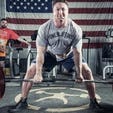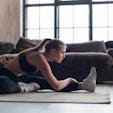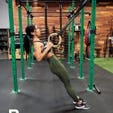Anyone who loves fitness probably loves the film Conan the Barbarian. Like most fitness enthusiasts, my initial inspiration to workout came from Arnold Schwarzenegger. For me personally, it was Arnold, on screen wielding a giant sword on a warpath to avenge his people. I’d get down on the floor every time I saw this film and immediately begin cranking out some push ups.
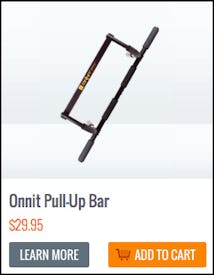 Fitness has come a long way since the times of Arnold, but a key message in that early film remains true to this day. For those of you who don’t remember the film well let me refresh your memory on “The Riddle of Steel”. Thulsa Doom (played by James Earl Jones).
Fitness has come a long way since the times of Arnold, but a key message in that early film remains true to this day. For those of you who don’t remember the film well let me refresh your memory on “The Riddle of Steel”. Thulsa Doom (played by James Earl Jones).
Thulsa when confronted by Conan says, “Steel isn’t strong, boy. Flesh is stronger. Look around you.” He then motions to the crowd and points to the cliffs. “There, on the rocks, that beautiful girl.” He beckons to the young woman, “Come to me, my child.” She steps off the cliff to her death. “That is strength, boy.” Exclaims Doom. “That is power: the strength and power of flesh. What is steel compared to the hand that wields it?” He then sends Conan to be crucified on the Tree of Woe where Conan must contemplate this riddle.
This is the riddle that we must contemplate in fitness. We may have a strong looking physique and we may have all the desire in the world to wield a great many tools, but what’s behind the tool? At the end of the day, tools are simply tools. What good are they at improving our overall strength if the body which wields them is deficient and the mind that controls that body is not focused and engaged?
When I went for my ONNIT Certification, John Wolf said something that applies very well to this very concept. He said, “Own your center.” It’s a very simplistic statement, but in essence he is saying the same thing. Be in complete control of your body at it’s center, because if your body is weak then you will not be able to maximize the full potential of any piece of equipment, whether it be a Steel Mace, Steel Club or Kettlebell.
To “Own your center” and excel under load you should also be proficient, efficient and stable in bodyweight exercises that incorporate Pushes, Pulls, Squats and Hinges.
Essential Bodyweight Movement #1: Push
The most basic and fundamental pushing exercise is the push up; particularly the strict push up. Not only does this movement require full engagement of the core muscles connecting to the hips, but it requires an athlete to stabilize the muscles around the shoulder joints.
Push ups can be done for power and conditioning or strength depending on the speed and duration of the movement. More explosive pushups to the point of even being able to clap the hands together in front or behind your body require lots of power. There is a tremendous amount of speed required to accelerate your body upward.
Slow and focuses pushups can test your strength and help you to focus on the key muscles being used throughout the movement and when done for a timed duration can test your conditioning and endurance. It’s important to mix it up in order to maximize muscle growth and get maximal results.
Essential Bodyweight Movement #2: Pull
I still remember the grade school pull-up test which was probably embarrassing for those of us who couldn’t pull our own bodyweight. The pull-up is the bane of many people’s existence. Why? Because it’s just outright difficult, especially if you’re a little bottom heavy.
There are all types of pull-ups out there, but we’re not talking about pull-ups using momentum here. We’re talking strict pull-ups. Why strict? Well, we’re talking about being strong and speed or momentum are not going to do much to improve your overall strength even though you may get more reps.
To improve your strength, you must learn to consciously engage your muscles in a controlled manner throughout the duration of the movement. We want quality over quantity when training for strength. No exceptions.
Essential Bodyweight Movement #3: Squat
The squat is one of the two fundamental lower body movements. Over the years I’ve seen a lot of guys go in the gym and load up the bar and squat, but if you ask them to squat without a bar on their back it’s nearly impossible.
There are many schools of thought about depth of squat, knee positions, etc. The purpose of this article is not to debate that. This goes back to the concept of “Owning your center”. Does your squat provide maximum stability throughout the full movement? Can you stop your squat at any point in the movement and be balanced and sturdy? Does your squat look the same regardless if you have load or not?
If you don’t know, then it’s time to find out. The best way is to record a bodyweight squat and then record a loaded squat and compare the two.
Does your form break down in your bodyweight squat when done slowly? How about when done for duration of time? The bodyweight squat can tell you a lot about your postural muscles in the mid and upper back, flexibility and mobility through the hips and much more. These are a mainstay in my program and I will always prepare myself for a loaded squat workout with bodyweight squats.
Essential Bodyweight Movement #4: Hinge
Hinging at the hips is important for strengthening the posterior chain of muscles from the upper, mid and low back to hamstrings and lower leg.
One of my favorite bodyweight hinge movements is the Single Leg Dead Lift. Not only does this exercise require balance, but it also challenges the core and requires body to fight rotation across the hip joint.
This exercise is a great way to find and eliminate any imbalances you may have in your hinge. Some people favor one side or the other and it’s important to identify your strengths and weaknesses.
Is you hip dropping to one side?
Are your shoulders opening up to one side?
These are very popular in rehab facilities, but I believe they should be done as a part of Prehab and root out imbalances before they manifest themselves as injuries. Learning to stabilize the hips by doing single leg hinges should improve your hinge in general, from Deadlifts to Good Mornings.
So before you go wielding heavy objects in attempts to get strong, be sure to “own your center” and remember “What is steel compared to the hand that wields it?”
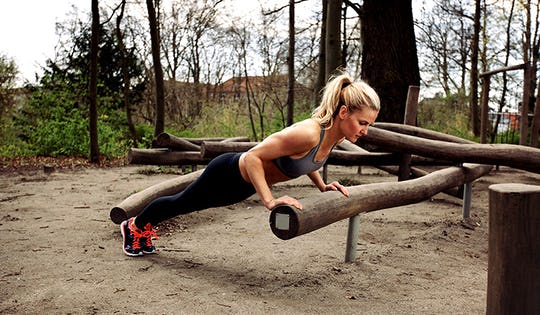




)

